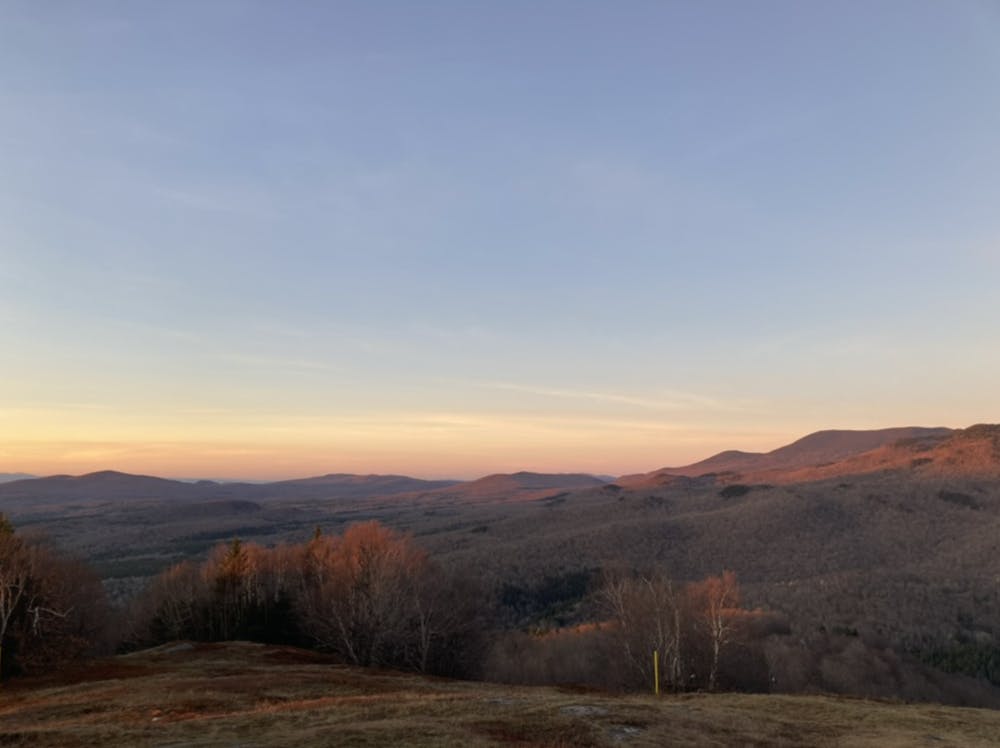Middlebury is now the latest contributor to Green Mountain Club’s (GMC) efforts to protect the Long Trail. Last month, the college donated a 1.5-mile segment of land — stretching from the summit of Worth Mountain to Vermont Route 125 — to GMC, leaving just two percent of the land on the Long Trail unprotected.
For over 100 years, GMC has been managing trails across the state, which collectively span a network of 500 miles. The Long Trail is the organization’s flagship conservation effort: to protect a 272-mile-long stretch that follows the ridge of the Green Mountains from Massachusetts to the Canadian border. With Middlebury’s donation, the club now manages over 200 miles of the trail, and 98% of the trail is legally protected.
The land given by the college is considered a right-of-way path, meaning from now on, the land will not be able to be developed for any other purposes. The action does not alter the ways in which the public interacts with the trail, but it clarifies the use of the land for recreation in perpetuity.
Marc Lapin, associate laboratory professor and college lands conservationist, mentioned past concerns over the development of the tract in an email to The Campus.
“Some aspects of concern that have led to the years-long process were related to exploring possibilities for wind turbine(s) to generate renewable electricity. The college has customarily favored leaving options open for land uses and management,” he wrote.
From sunrise trips with Middlebury Mountain Club (MMC) to outdoor educational exploration along adjacent Lake Pleiad, the tract is beloved by the college community. MMC’s Outdoor Trips Assistant Bernadette Osborn ’26.5 explained the update will provide local access to a place to lead hikes and skinning ski tours.
“It is just really special to have a place so close to give us accessible adventures,” she said. “As a club we use the trail rain or shine throughout all four seasons. For us it is pivotal to protect this strip of land to ensure continued MMC trips for future students.”
The stretch of the trail has a long history with the college. Joseph Battell donated the area in 1916 as a plot of land without any specific designation for its usage, according to Vermont Public Radio. In 1936, the Snow Bowl opened its first ski trail, which was one of the first ski areas in Vermont. Later, in the 1940s and 1950s, the area began to be used more for its singular ski jump. Today, students enjoy the slopes year-round, for purposes ranging from summer picnics to the celebratory Feb graduation.
Through the college’s emphasis on land protection and the foundations of the Land Stewardship Initiative, Middlebury says it is committed to interacting with their lands respectfully and sustainably in the interest of greater communities.
This land donation is one way to further bring together the community, according to Lapin, who explained how this donation furthers that institutional mission.
“The ROW (right-of-way) that the college granted to GMC for the Long Trail is something that has been discussed for years and it’s wonderful to see that it is now official… I’ve heard of no “pushback” or resistance to the protection of the Long Trail through the Snow Bowl parcel,” he wrote.
Though the commitment of the section of the Long Trail by the college to the GMC has been a verbal agreement for years, making the agreement formal has some additional benefits, according to Director of Business Services Matthew Curran, such as the added leeway granted to the GMC by the easement from the college.
“Now with this easement over 99% of the total long trail is under some easement, which allows them much more flexibility in maintaining the trail,” Curran wrote in an email to The Campus. “The community should not notice any changes, with the exception that over time the trails may be better maintained for hikers.”




